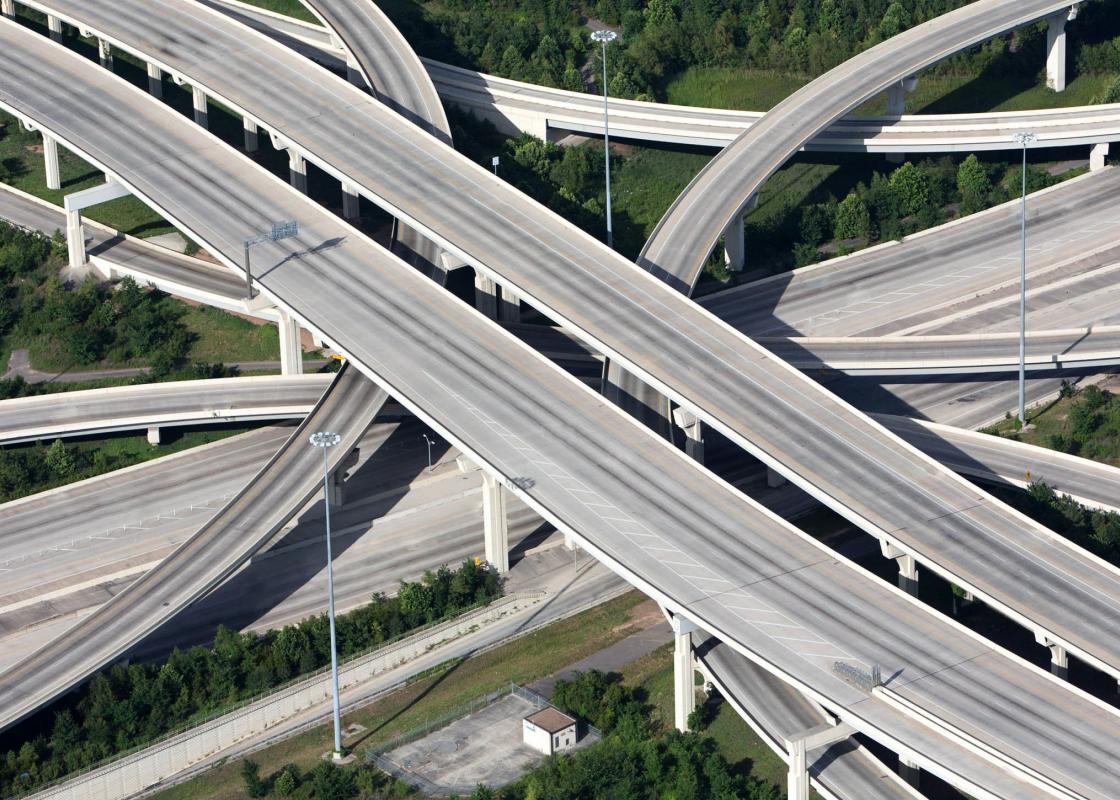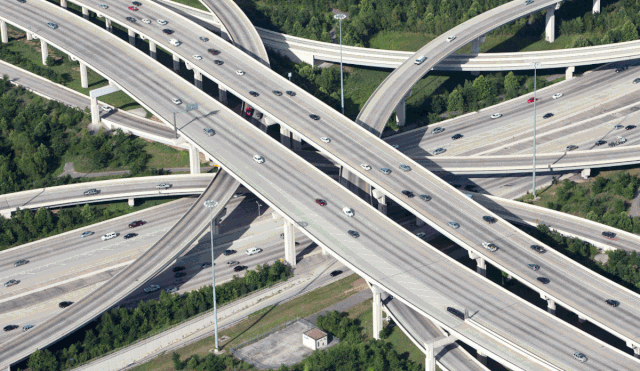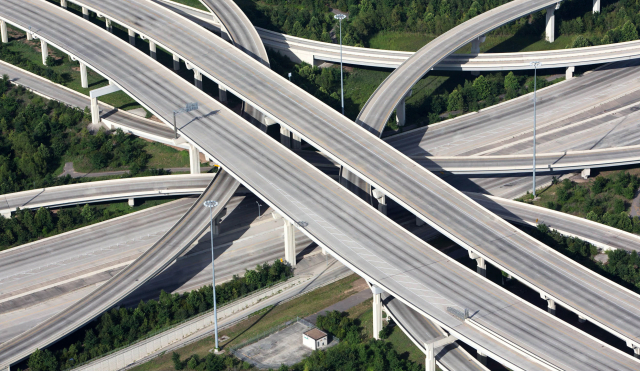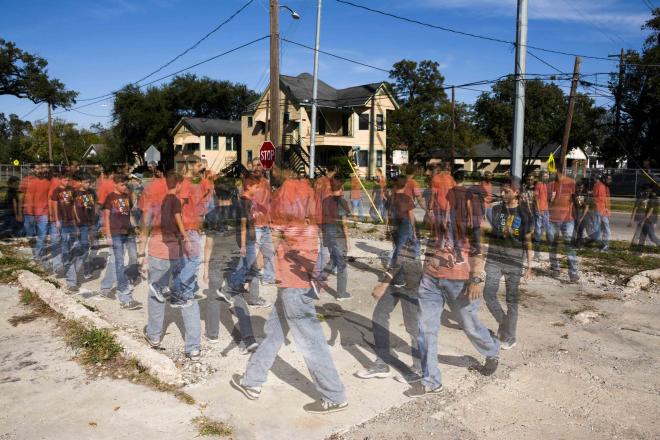Artist Carrie Schneider reflects on "Horizon Lines" with a new artwork in which she erases cars from an aerial photograph by Alex MacLean of a Houston highway interchange. The original photo and the artwork itself are below.
Since being struck by the first section of Cite 95, I've been driving around with the satellite view on my Google maps. Instead of pastel road lines, I'm navigating between driver's-seat-eye level and aerial perspective, through brown, gray, and green sandcastles punctuated with the titles of sponsored destinations and locations tracked from my previous search history.
More than 30 years after Alex MacLean began the practice featured in "Horizon Lines," now common in an age of drones, satellite imagery, and Google Earth, he has a lot of company up there. Much of it perhaps less interested in an enlarged collective or artistic perspective than increased height in the vertical distribution of resources, collecting have-alls-and-see-alls in superior, higher resolution space. So it's mesmerizing, getting to see this landscape that's so carefully withdrawn, hard to apprehend in more than just peeks.
I'm tracking between the photographs and their fold-out legend, captioning the enormous imagery with points of extraction, production, refining, and distribution, detailing how from this source landscape, hub of the preceding list, these materials are massively distributed throughout all of our lives everywhere.
In the final few of MacLean's published photos, irregular shadow patterns from clouds---still more aerial than us---peek in. God's-eye-view interrupted, we look over our shoulders---sandwiched, as the witness, between something enormous and something more enormous. The nimble, disciplined, cultivated perspective from which the artist shot collapses back into its target.
As Raj Mankad's introduction reflects, in Maclean's photos, the aesthetic order is comforting; the actual order that it is a reflection of is terrifying. No out from the overwhelm, and we're inside of what we thought we'd suspended with our lens.
Looking back on the present, an age when to be an artist was to be itinerant, it felt important to be here. At the naming of the Anthropocene, in a city which is itself a sculpture of advanced neoliberal capitalism. Some of us thought it was interesting how a city, branded as a model for the new economy, employed art in order to credential itself as a global hub of not just energy, but also power. Some believed that the unsurveilable (sprawl) and unsuspected site (belly of the beast) provided discreet cover, fostered strange strategies that are interesting from an artistic point of view. Because it is dire, it is important. We are counting on artists, just in time and on demand, to supply the survival creativity that interrupts the channel between dire and whatever else.
I was floating my thoughts, in a juicy, if defeatist, realm between stratosphere and space, until turning one more page ... texture of paper switches in fingertips. Smacked back down into duplexes and design details.
It was nice to be at elevation for a minute.
Past these photos, maybe there's no use making art out of what they've seen. It couldn't compare, anyway, to the mark we've already made::
Participatory Drawing, 1945-
fuel drips on concrete
575.5 miles












